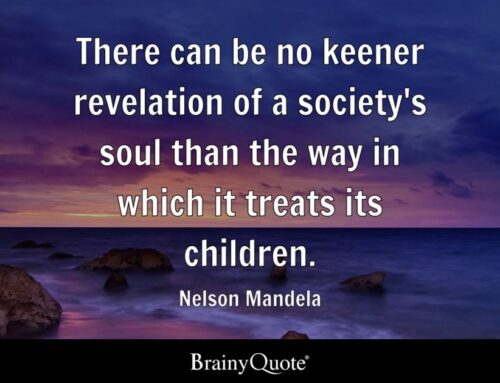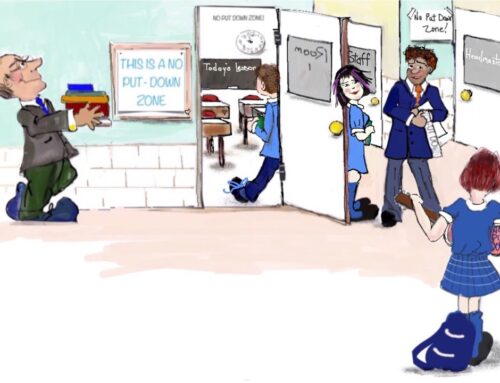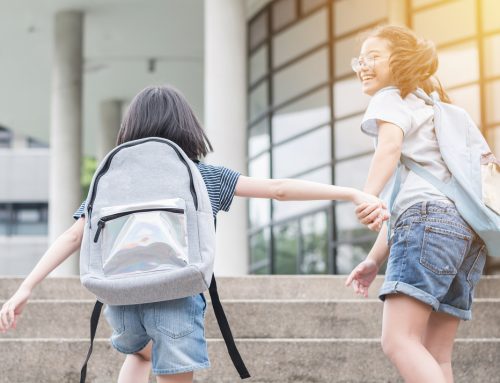There is no excuse for terrorism – but if we hope to have any chance of stopping it, there has first to be understanding and then a long-term strategy to undermine the causes. There has been much debate across the world about the radicalisation of young men and women, some of them committing horrific acts of violence in the name of Islam. Because this is their stated purpose, millions of peace-loving Muslims get tarred with the same brush, compounding a negative cycle of mistrust and blame.
Religion is not the primary motivator for joining violent extremists like ISIS (Butler, 2015). When there is a call for jihad only very few individuals respond – for the vast majority of Muslims this is antithetical to their Islamic faith. Extremists are therefore not acting on the basis of religious belief but are seeking a sense of meaning, of connection and of giving their lives some significance (Kruglanski et al, 2014). When young people are told that they will achieve ‘glory’ if they kill those who represent ‘western’ values and practices, and there are few other avenues open to their feeling important, then fighting for such a cause may be appealing. It would not be the first time in history that powerful rhetoric has motivated young people to leave their families and risk their lives to attack others.
When young people come to believe they can achieve this ‘significance’ and belonging by acts of terror, we need to consider what might be making them more open to this persuasion and what might be done to reduce the chances. As many acts of terrorism are perpetrated by ‘home-grown’ terrorists, most of whom were educated in the country in which these acts take place, what might schools do to reduce the risk?
The importance of belonging
Feeling accepted within your social group is a basic human need. Identities are formed in our relationship with others. The groups to whom we are affiliated shape who we are and who we become. People also have a powerful, negative, deep-rooted reaction to being socially rejected. The brain treats social pain and physical pain in similar ways and this is particularly evident in the emotional response to social exclusion. Social exclusion inhibits feelings of belonging, self-esteem, perceptions of control over the environment, and perceptions of leading a meaningful existence. Negative feelings are also elicited just as strongly by being actively excluded from groups to which the individual does not have a particular affiliation as by a group in which he or she seems themselves as an insider.
So, what does this all mean in an educational setting?
The Australian Policy Unit (Jennings, 2015) found three shared characteristics young people who become violent Islamist extremists. They had a sense of injustice or humiliation, they had a need for identity and purpose and a need to belong. Most had completed school with qualifications but that evidently wasn’t enough: “Overall, our assessment shows a group of people clearly failing to gain satisfaction or friendship in mainstream Australian life” (p.13)
There are links between the causes of radicalization and other incidents of mass violence. Wike and Fraser (2009) researched 109 killings in US schools since 1999 and found high levels of social stratification where some students were seen as stars and others rejected as losers. It is those who perceived themselves as ‘losers’ who committed the violence –usually planned and premeditated with no concern about their own safety. The primary recommendation from this research is strengthening school attachment.
Schools often promote a sense of group identity that may be demonstrated in uniform policies, support for sporting teams and pride in academic successes. Whether everyone in a school experiences a sense of belonging however, depends on the beliefs and practices that predominate in school culture. To feel a sense of inclusive belonging at school all students need to believe that they matter, that their contributions are valued and others care about them (Roffey, 2013).
Institutional cultures are key to student engagement and wellbeing. Culture is created in the way people talk to and about each other. It is demonstrated in the micro-moments of interaction and what can be heard in classrooms and seen on the walls of corridors. It is about what is both overtly and covertly valued. It is the opportunities people have to contribute, and whether or not they have an authentic voice.
Although not offered as an answer to the complex issue of radicalisation, it is valid to question what schools might do enhance a sense of wellbeing and inclusion within the educational environment that will reduce the need for individuals to find a sense of significance by committing atrocities. They may not do this whilst still at school but what they have learnt about themselves – and about others – in those institutions will have far reaching outcomes for their future.
It is also relevant to ask whether education needs to re-prioritise social and emotional learning – exploring what we have in common as well as valuing unique differences. One answer is to provide an environment in which students are not only treated equally and with respect but that there is a focus on connecting with each other by focusing on what they share. The overriding focus on academic outcomes has undermined the significance of learning about each other – and the development of empathy.
References:
Butler, D. (2015) Terrorism science: 5 Insights into jihad in Europe. Nature 528 Issue 7580
Jennings, P. (ed.) (2015). Strategy: GenY Jihadists: Preventing Radicalisation in Australia. Canberra, ACT: Australian Strategic Policy Institute.
Kruglanski, A.W., Gelfand, M.J.,Belanger, J.J., Sheveland, A., Hetiarachchi. and Gunaratna, R. (2014) The psychology of radicalisation and deradicalisation; how significance quests Impact violent extremism Advances in Political Psychology, Vol. 35, 1 (20)
Roffey, S. (2013) Inclusive and exclusive belonging: The impact on individual and community wellbeing. Educational and Child Psychology, 30(1), 38-48.
Wike, T.L. and Fraser, M.W. (2009). School shootings: Making sense of the senseless. Aggression and Violent Behavior, 14(3), 162–169.







